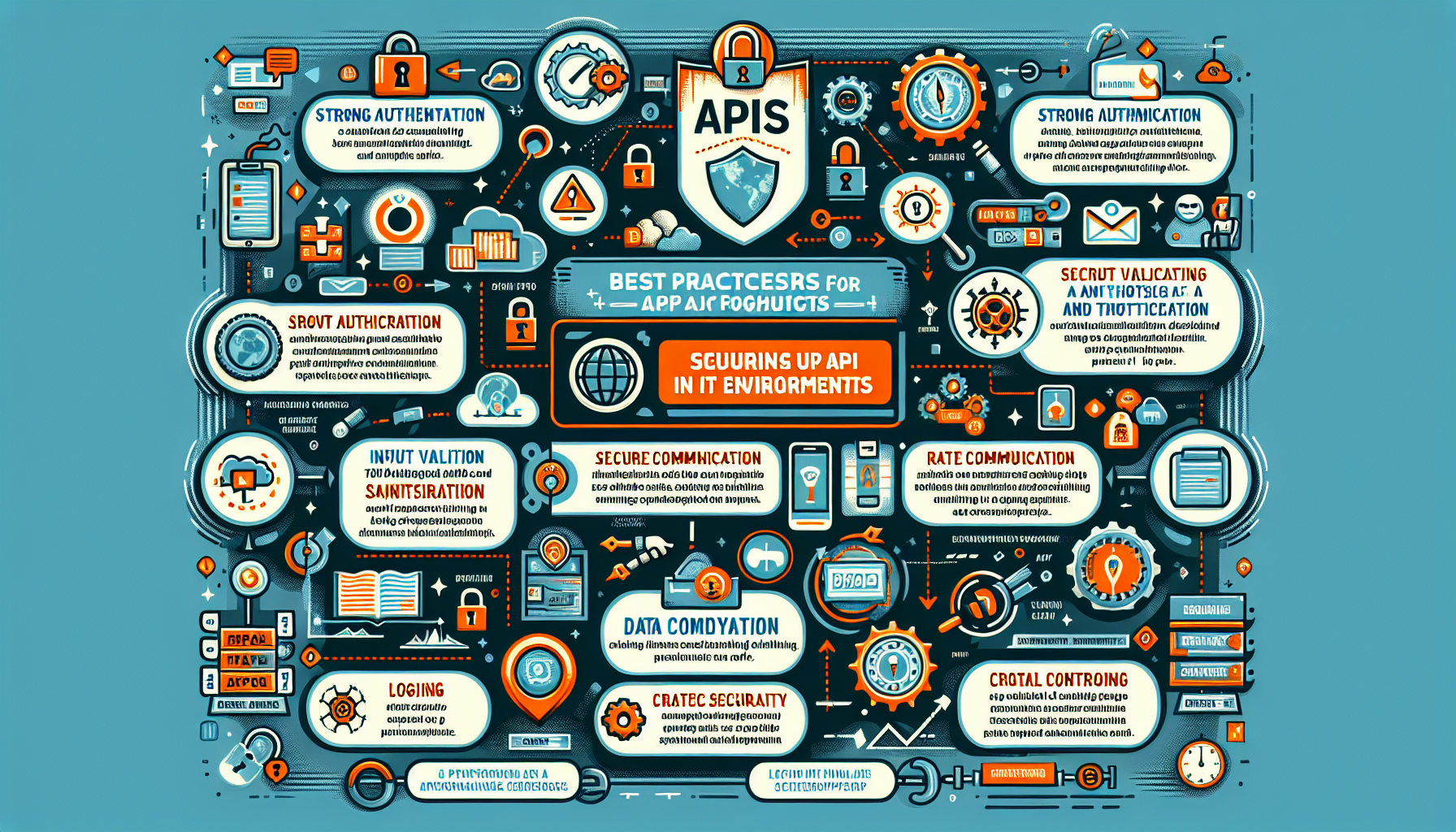Securing APIs is critical in any IT environment, as APIs are often the gateway to sensitive data and functionality. Below are best practices for securing APIs to ensure robust protection and minimize vulnerabilities:
1. Use Strong Authentication and Authorization
- Authentication: Require API consumers to authenticate using secure methods such as OAuth 2.0, OpenID Connect, or API keys. Avoid hardcoding credentials into code.
- Authorization: Implement role-based access control (RBAC) or attribute-based access control (ABAC) to ensure users or systems only access resources they are permitted to.
- Enforce the principle of least privilege to limit API access to only what’s necessary.
2. Use HTTPS/TLS for Secure Communication
- Enforce HTTPS for all API communication to encrypt data in transit.
- Disable insecure protocols and weak ciphers. Only use TLS 1.2 or higher.
- Use certificates from trusted Certificate Authorities (CAs) and regularly rotate them.
3. Implement Rate Limiting and Throttling
- Protect your APIs from abuse or Distributed Denial of Service (DDoS) attacks by setting limits on the number of requests a client can make.
- Use throttling to ensure fairness in resource usage and prevent API server overload.
4. Validate and Sanitize Input
- Validate all incoming data to ensure it adheres to expected formats and types.
- Sanitize inputs to prevent injection attacks such as SQL injection, XML external entity (XXE) attacks, and cross-site scripting (XSS).
- Use parameterized queries and proper encoding techniques.
5. Use API Gateways
- Deploy an API gateway to centralize security controls such as authentication, rate limiting, and logging.
- API gateways can also act as a reverse proxy to hide backend infrastructure.
6. Encrypt Sensitive Data
- Encrypt sensitive data at rest and in transit using strong encryption algorithms.
- Avoid exposing sensitive information (e.g., API keys, database credentials) in API responses or error messages.
7. Monitor and Log API Activity
- Implement logging to capture API usage, including who accessed the API and what data was accessed.
- Regularly review logs for suspicious activity or security anomalies.
- Use Security Information and Event Management (SIEM) tools to analyze and respond to security incidents.
8. Use Versioning
- Implement API versioning to manage changes without breaking existing clients.
- Deprecate and eventually disable older, less secure API versions.
9. Protect Against Injection Attacks
- Use input validation and output encoding to avoid injection attacks.
- Employ Web Application Firewalls (WAFs) to detect and block malicious requests.
10. Implement Secure Error Handling
- Avoid exposing sensitive information in error messages (e.g., stack traces, database details).
- Use generic error messages for external users while logging detailed errors for internal debugging.
11. Secure API Keys and Tokens
- Treat API keys, tokens, and other credentials as sensitive information.
- Store them securely using environment variables, secret management tools, or secure key vaults.
- Use short-lived tokens and refresh tokens for better security.
12. Regularly Perform Security Testing
- Conduct regular penetration tests and vulnerability scans on your APIs.
- Use automated tools to identify common vulnerabilities such as broken authentication, insecure direct object references (IDOR), or misconfigured CORS policies.
- Fix identified vulnerabilities promptly.
13. Implement Content Security Policies
- Restrict the types of content that can be processed by your APIs to prevent attacks like XML bomb attacks or JSON hijacking.
- Use Content-Type headers and validate payloads against expected schemas.
14. Use Kubernetes and Cloud-Native Security Practices (if applicable)
- If APIs are hosted in a Kubernetes environment, secure the cluster by:
- Implementing network policies for isolating API services.
- Scanning containers for vulnerabilities before deploying them.
- Using RBAC to control access to Kubernetes resources.
- Leverage cloud-native tools like AWS API Gateway, Azure API Management, or Google Cloud Endpoints for built-in security features.
15. Keep Software and Libraries Updated
- Regularly update API frameworks, libraries, and dependencies to the latest versions.
- Monitor for vulnerabilities in third-party components and apply patches promptly.
16. Implement CORS Policies (Cross-Origin Resource Sharing)
- Restrict which domains can access your API using strict CORS policies.
- Avoid using wildcard
*in CORS settings, especially for sensitive endpoints.
17. Use AI/ML for Threat Detection
- Leverage AI and machine learning to detect unusual API usage patterns, such as credential stuffing attacks, brute force attempts, or data exfiltration.
- Integrate with security platforms that use AI-driven analytics for real-time threat detection.
By following these best practices, you can significantly enhance the security of your APIs and minimize the risk of unauthorized access, data breaches, and other security incidents.
What are the best practices for securing APIs in IT environments?




